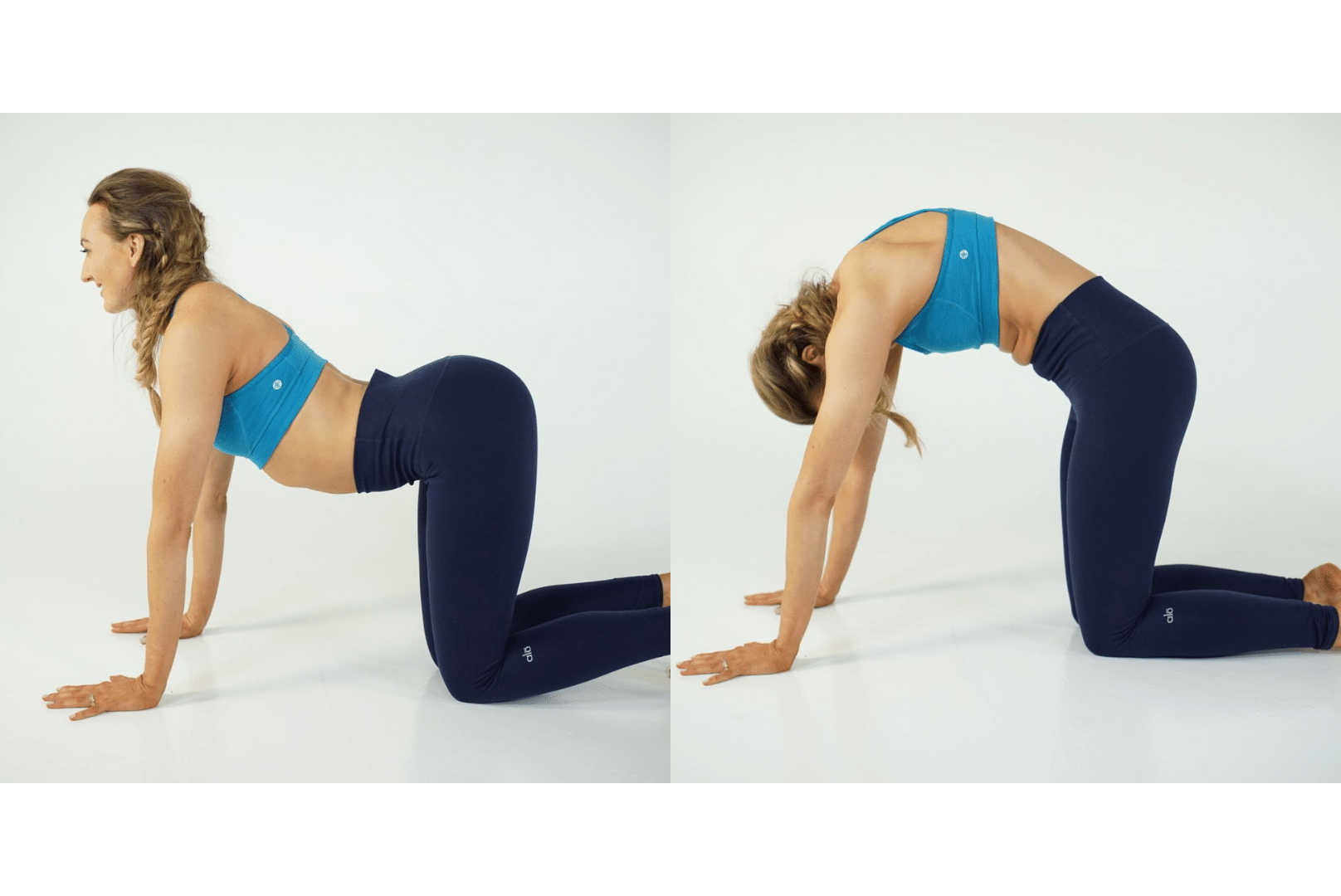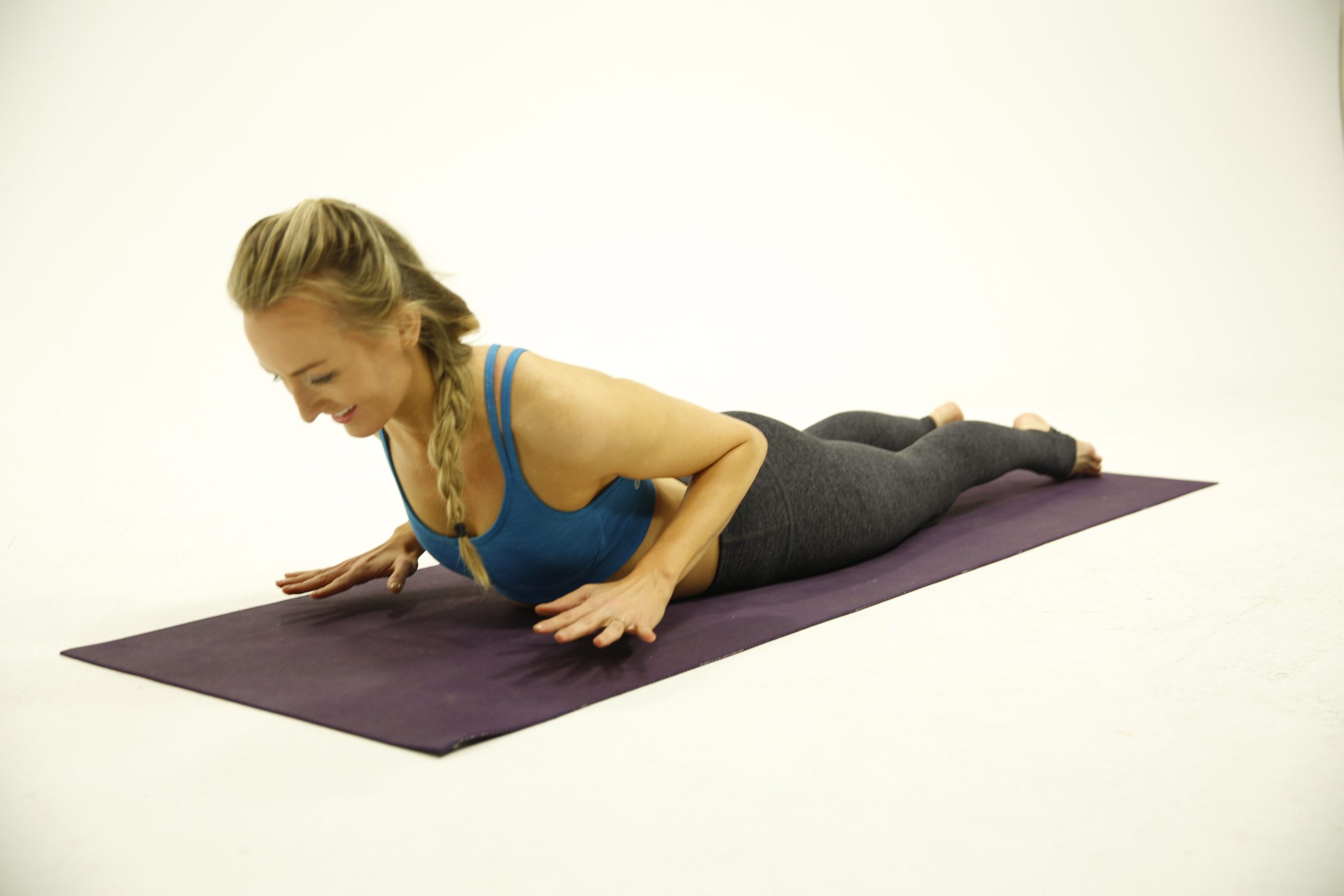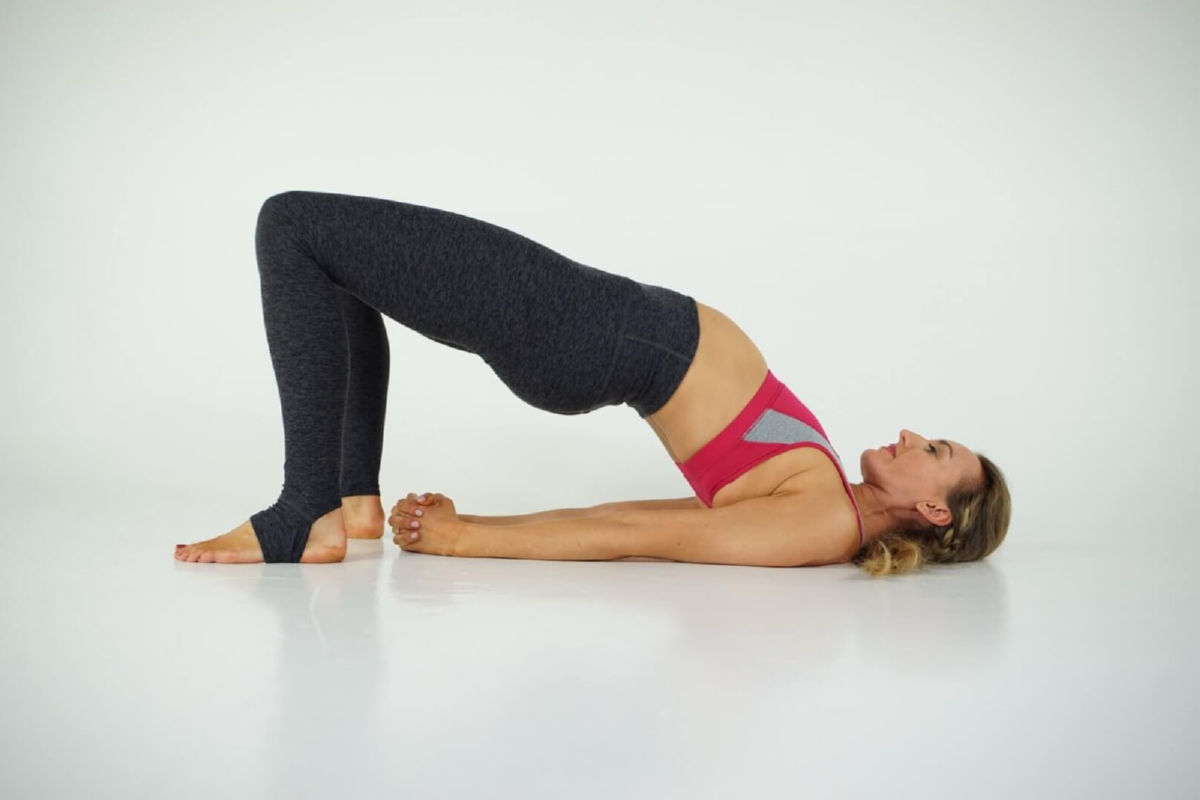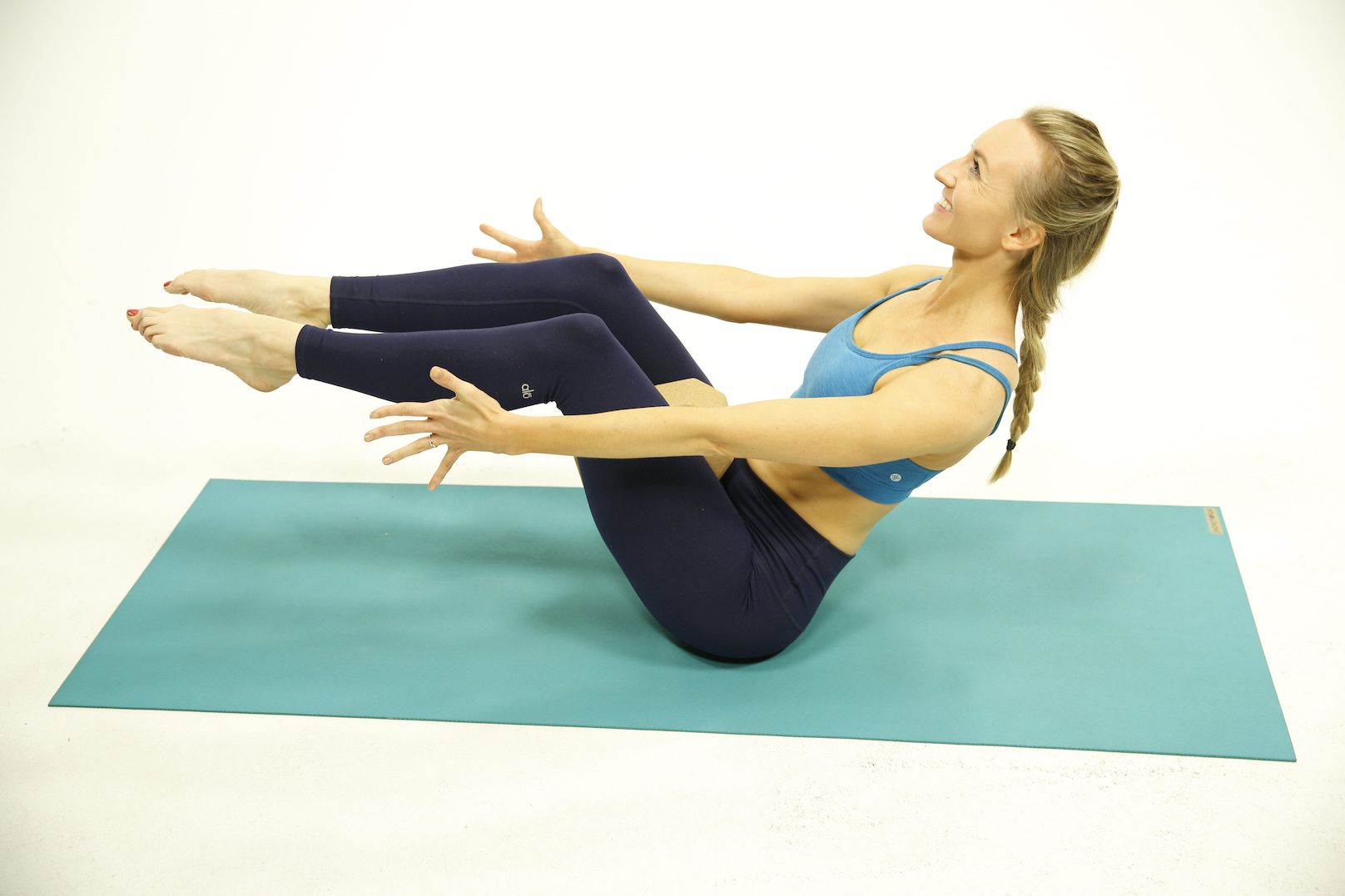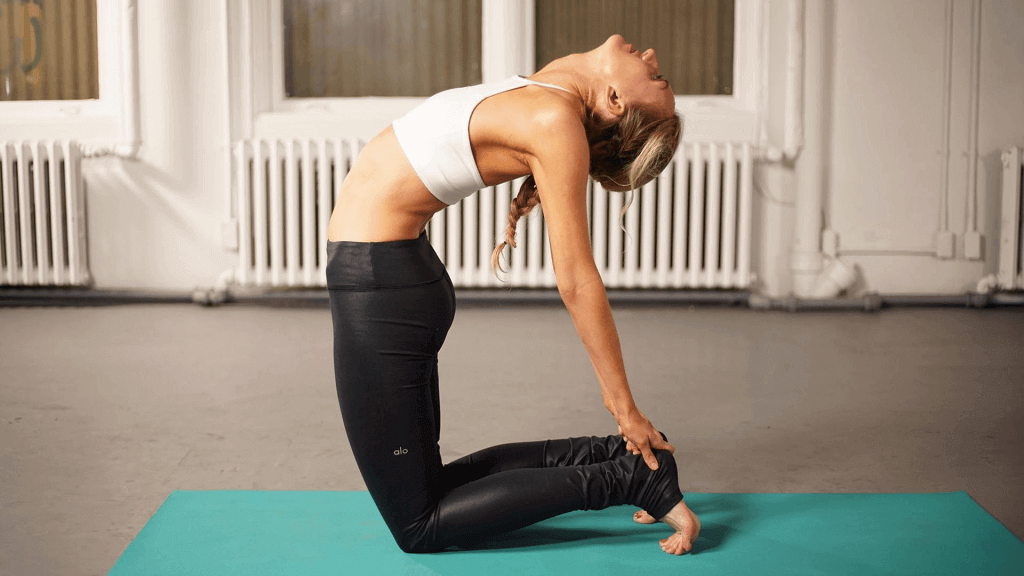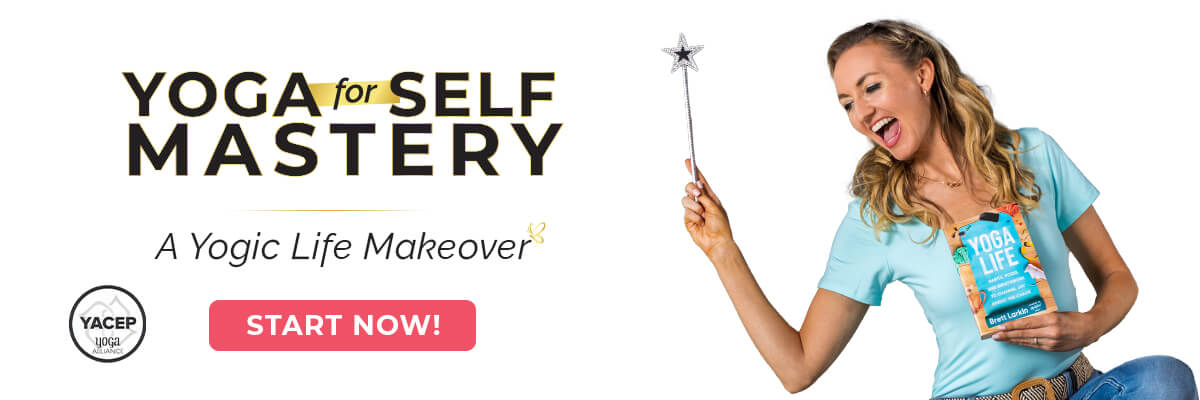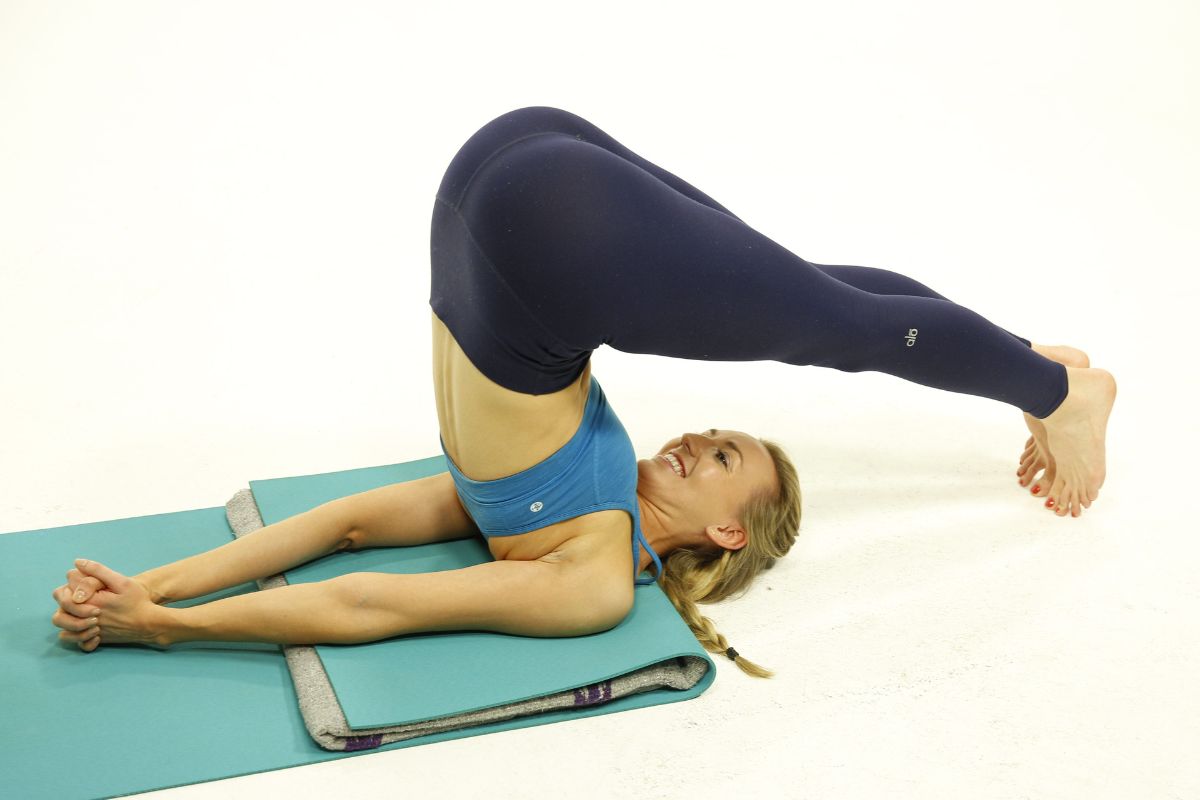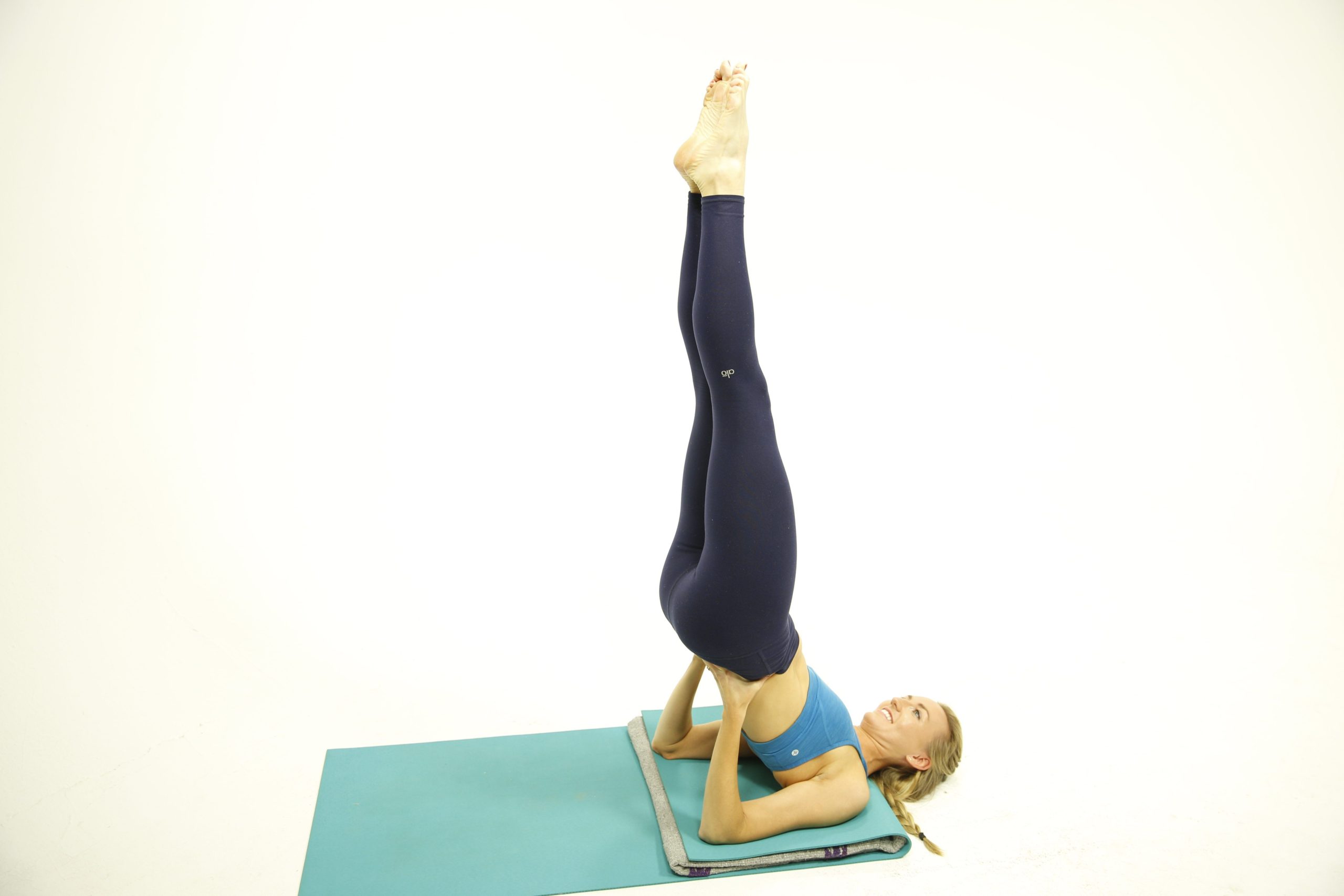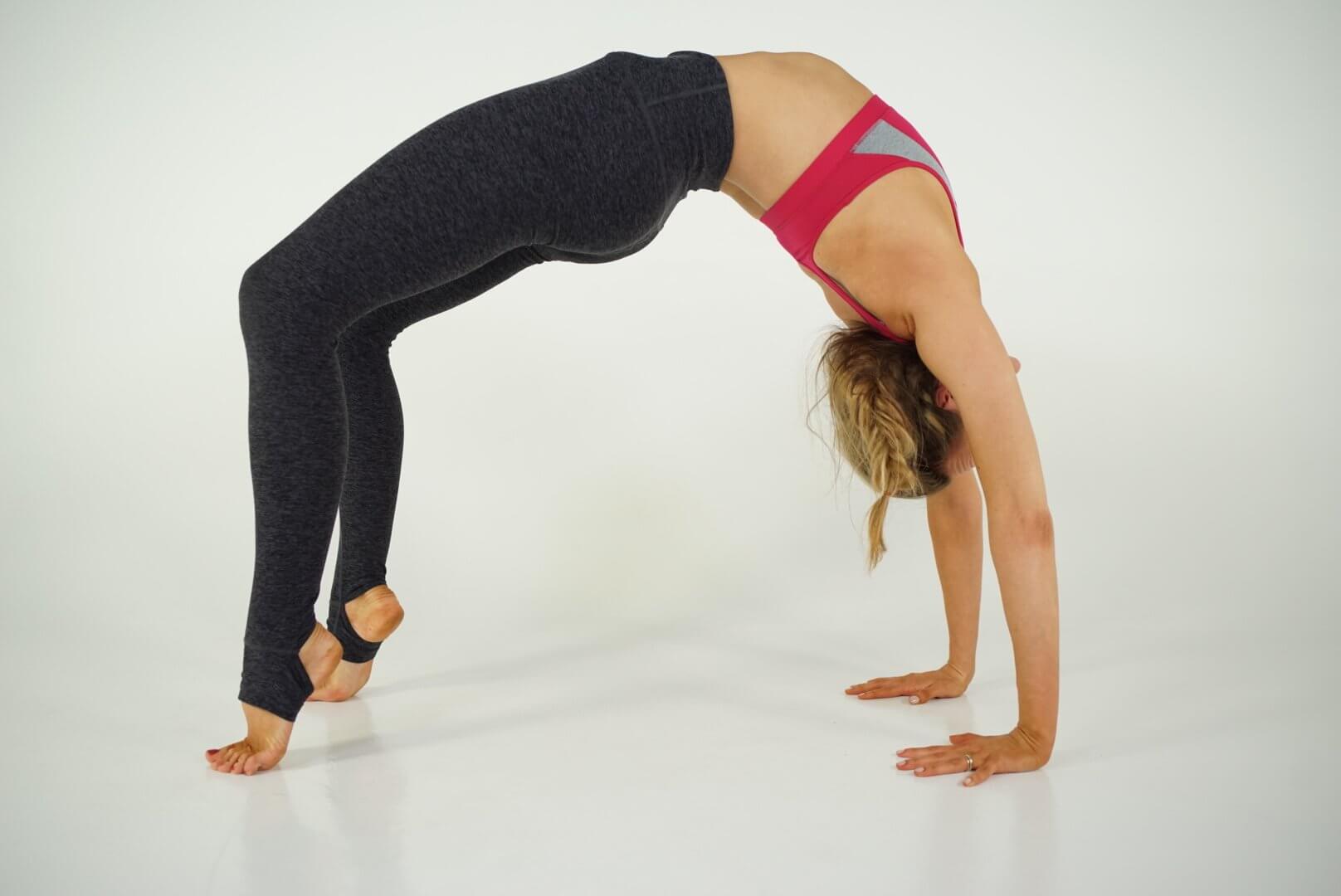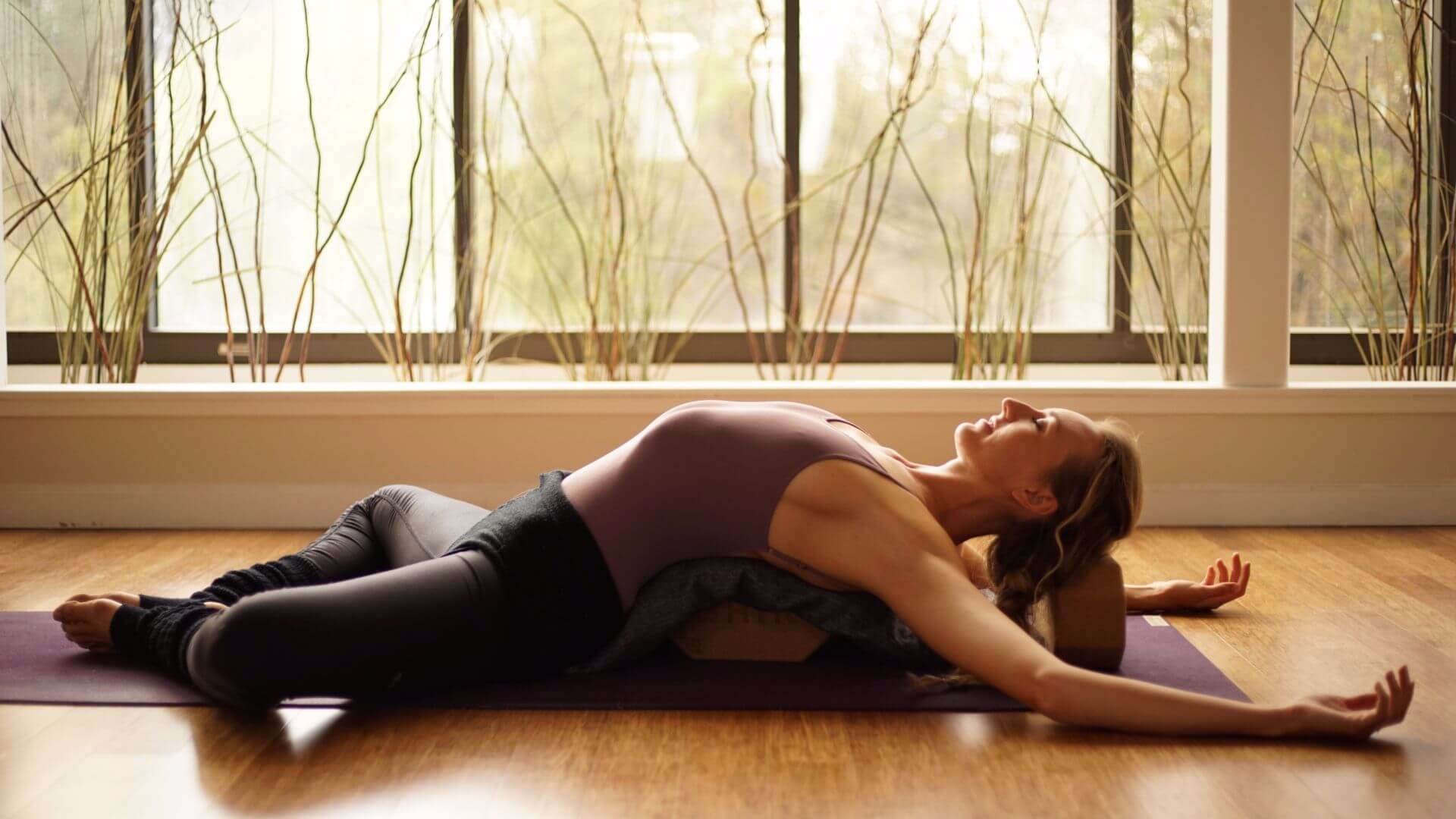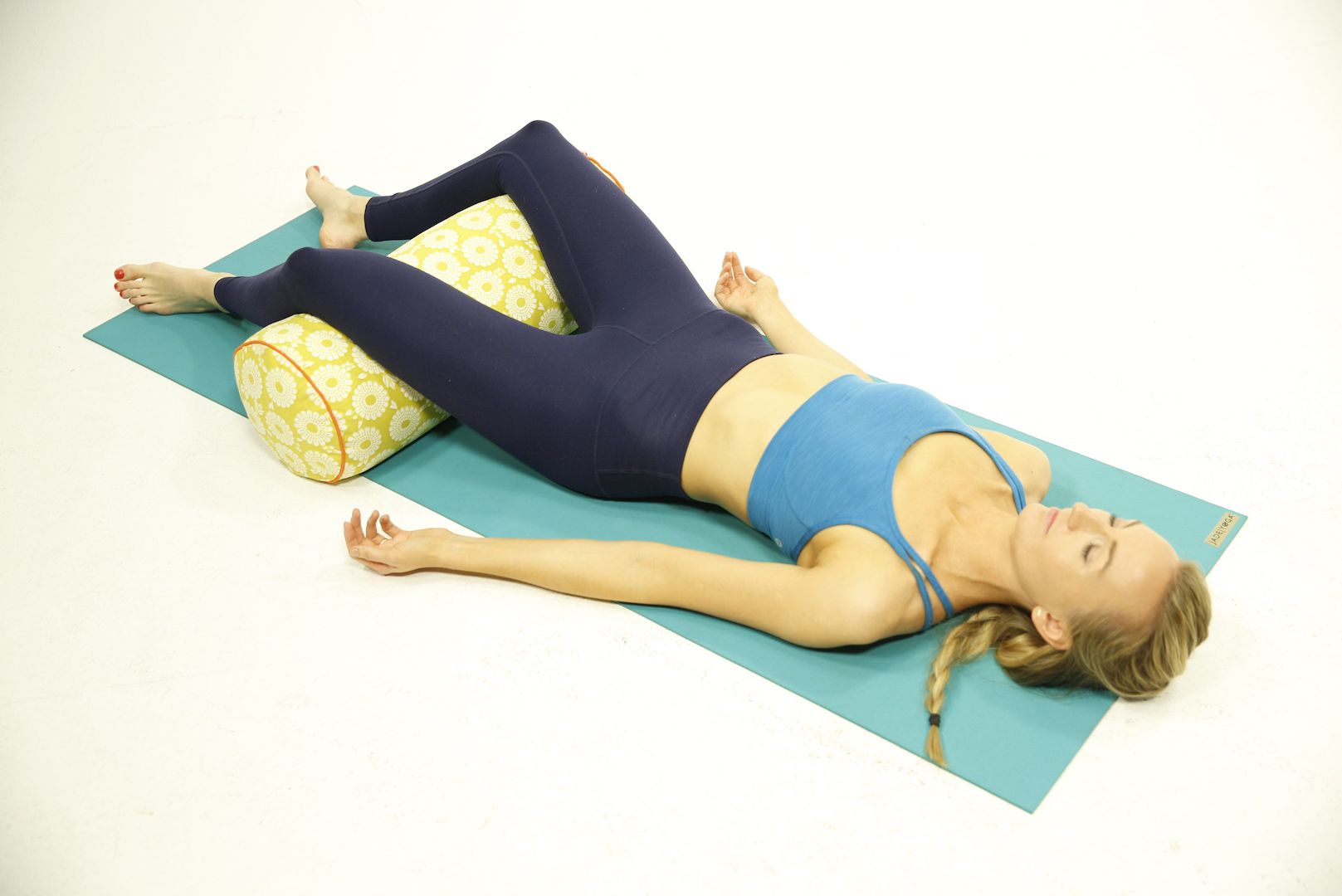Modern life, stress, birth control… so many things are not working in the best interests of your hormones… and as a result, lots of people have developed thyroid disorders. But don’t panic if you are one of many women suffering from thyroid diseases! On this blog, we don’t believe there is a problem your daily yoga practice can’t solve.
What Is The Thyroid?
Basically, your thyroid is a small endocrine gland in the front of your neck at its base. It’s shaped like a cute little butterfly. It produces and secretes hormones that regulate most of your body’s major functions and regulates your metabolism. If your thyroid hormones are out of balance, then your WHOLE body is out of balance.
There are two major conditions affecting the thyroid gland: hypothyroidism (which can be caused by Hashimoto’s disease), iodine deficiency or thyroiditis (inflammation of the thyroid gland), and hyperthyroidism, which can be caused by Graves’ disease, thyroid nodules, excessive iodine, or thyroiditis. It is believed that stress can also be a contributing factor to these conditions.
Here’s a breakdown of some of the different traits for each:
- weight gain
- constipation
- dry, pale skin
- high cholesterol
- depression
- lower body muscle weakness
- fatigue
- cold intolerance
- thinning hair
- irregular or heavy periods
- problems with fertility
- weight loss
- frequent bowel movements
- anxiety
- jitteriness
- irritability
- depression
- mental or physical fatigue
- rapid heart rate
- irregular periods
- problems sleeping
How Yoga Can Support The Thyroid
Yoga is like acupuncture in motion! When you put pressure on the area of discomfort or dysfunction you can open it up for healing. In this sense, yoga for thyroid would include poses that put pressure on the thyroid. Yoga asanas like bridge or shoulder stand (see more below), can activate an underactive or overactive thyroid gland, encouraging it to heal and release proper hormone secretions.
Another great practice to activate the thyroid gland… chanting!! Not only does chanting physically stimulate the throat but it brings healing from the inside out. If you’re unsure about a chanting practice, read this to get a better understanding of how chanting affects your body.
Did you know that Kundalini also has kriyas just for thyroid health? From ancient times, it’s been a core focus because of the key role it plays in hormone secretion. You can go into the fascinating history of Kundalini in my Kundalini Demystified course.
If you are living with thyroid disease, get curious! Do my Uplifted 200-Hour Yoga Teacher Training to become what I call “a body detective.” We’ve had lots of students living with chronic conditions do our training, and it has helped them immensely. Read more about using yoga to overcome a chronic condition on this blog post!
See? There are a multitude of ways yoga can help with thyroid functions.
What the science says: A thyroid disorder will affect 1 in 8 women in their lifetime. WHOA! That’s a lot. Interestingly, literature is also suggesting that depression may play a role in thyroid disorders as well. Studies have concluded Yogic practices are effective to balance the secretions of bodily hormones in the treatment of hypothyroidism and hyperthyroidism patients. Yoga has actually been shown to regulate thyroid hormone levels in patients in addition to lowering cholesterol and helping other symptoms.
The Uplifted Perspective: If depression is linked to thyroid problems, then you know that yoga can help… and if you didn’t know, I explain how in this post.
But a thyroid disorder isn’t just about chemicals and hormones in your body. There is also an energetic imbalance happening. Not sure what that looks like? Ask yourself these questions:
- Do I have trouble setting boundaries?
- Do I have a hard time saying no?
- Is expressing my opinions or ideas difficult?
- Does charging my worth feel wrong?
If you answered yes to any of these, then chakra 5, your throat chakra, is showing an imbalance. And where is your thyroid located? IN YOUR THROAT!! We can approach healing through the chakra system too. There’s a whole course specifically for the 5th chakra in the Uplifted membership!
Some great poses to regulate your thyroid hormones follow below. But, for those of you who like to do and not read, go ahead and indulge in this class, right now:
Top Yoga for Thyroid Poses
To help thyroid issues like body temperature, stomach pain, joint pain, or blood pressure.
1. Cat/Cow Pose (Marjaryasana/Bitilasana)
Step 1: From a tabletop position, hands underneath your shoulders and knees underneath the hips.
Step 2: Inhale, drop the belly, keeping the abs engaged. Open your chest and send your heart forward, shoulders down and back. This is cow pose. Use the muscles of your lower back to send your tailbone toward the ceiling.
Step 3: Exhale, round the back, drop your head, tailbone draws down between the knees. This is cat pose.
Step 4: Repeat the postures, linking the breath to the movement.
Variations: Pad the knees with a blanket or put the hands on blocks for wrist issues. This can also be done in a seated position.
Benefits: Cat/cow is the perfect way to warm up the spine and work through any tightness. These postures open up the chest and shoulders. They also allow movement through the throat which increases thyroid functioning.
Uplifted Yoga Pro Tips:
- Think of the spine like a jump rope and slowly rotate around and through these two postures.
- Encourage intuitive movement with these postures. Do what feels best in YOUR body as you flow back and forth between the two.
2. Cobra Pose (Bhujangasana)
Step 1: Come to lay down on your stomach, taking both hands underneath the shoulders.
Step 2: Elbows stay tucked into the sides instead of splaying out. Press your hip points into the ground.
Step 3: Push down through the tops of the feet and engage the legs so much that your kneecaps lift off the floor.
Step 4: Inhale, engage the core, and lift your chest forward and up. Lengthen the spine and keep a slight dip in the chin.
Step 5: Send your shoulder blades down and back.
Step 6: Exhale and slowly lower the chest back down with control.
Variations: Take the hands out wider for more support. You can place a blanket under the hips to keep the low back neutral.
Benefits: Cobra pose strengthens the back muscles and expands the chest and throat. It strengthens the core muscles, opens the lungs, and puts gentle pressure on the abdomen and pelvis. Throat expansion brings energy to activate the thyroid stimulating hormone.
Uplifted Yoga Pro Tips:
- Slowly move the torso to the left and then the right to deepen this stretch and explore a range of motion.
- Start in baby cobra and work up to full cobra, then add a leg lift to test your back strength and monitor their progress.
3. Bridge Pose (Setu Bandha Sarvangasana)
Step 1: Start on your back, bring the soles of your feet to the mat hip-width apart, ankles under knees. Keep your arms by your sides.
Step 2: Inhale as you squeeze through the glutes and lift the hips up. Snuggle the shoulder blades together, and interlace the hands underneath you.
Step 3: Exhale here and hold for several breaths. When you are ready to come out slowly release the hands and exhale as you send the hips back to the ground.
Variations: Press the palms flat into the floor alongside the body or place a block under the hips for extra support.
Benefits: Bridge pose strengthens the muscles of the back body and opens the front body with a mild stretch opening the breath. This calms the nervous system to induce deep relaxation. It also puts pressure on the thyroid with slight neck constriction making it perfect in your yoga practice for thyroid problems.
Uplifted Yoga Pro Tips:
- Make this posture fluid: move with the breath. Inhale hips rise, slowly exhale hips float down to the ground.
- Challenge yourself by taking one leg up and testing where you are at. Use this pose to work up to deeper backends, like wheel.
4. Boat Pose (Navasana)
Step 1: From seated, bring the soles of your feet to your yoga mat and grip the backs of the thighs.
Step 2: Inhale and lengthen through the crown of the head, creating a long spine.
Step 3: Exhale and pull the belly up and in as you lean back on the sits bones.
Step 4: When ready, engage your quadriceps and lift the feet off the mat as a single package. Hold here, or option to take the arms out straight. Keep the spine long.
Step 5: Bring the soles of the feet back to the mat and come back to seated.
Variations: You can keep the hands on the back of the thighs for support or keep one foot down and only lift one at a time. For more advanced movement take the legs out straight creating a “V” shape.
Benefits: Boat pose warms the abdominal wall and strengthens the entire core. It requires focus on movement and breath which increases mindfulness and relieves everyday stress. And because you have to activate the muscles in the neck during this yoga pose, it is a great option for thyroid patients.
Uplifted Yoga Pro Tips:
- Keep the feet on the mat and play with the distance they are from your seat to make this more or less challenging, make sure to press down through the big toe.
- Boat activates the solar plexus chakra, encouraging creativity and balancing emotions. I love sequencing it in chakra-themed classes.
5. Camel Pose (Ustrasana)
Step 1: Kneel, but keep your hips elevated instead of sitting back on the feet.
Step 2: Make sure your knees, hips, and shoulders are stacked. Make sure that your right knee is directly below the right hip and that your left knee is directly below your left hip. Keep your spine erect.
Step 3: Bring hands to the lower back with fingertips pointing downward, palms pressed into your back.
Step 4: Push the hips and upper body forward and simultaneously lift your heart toward the sky.
Step 5: As you lean back, you have the option to relax your neck and grab your heels with your palms. If this is uncomfortable for you, keep your chin tucked so that your neck is in line with your spine.
Step 6: Lift yourself back to kneeling.
Variations: Put blocks behind you to grab instead of your feet. You can lean all the way back and bring your hands to the mat behind you instead. Or, don’t even reach back at all. Just remain in your kneeling position leaning back slightly to engage those core muscles.
Benefits: Camel Pose is a deep heart opener that will release blockages in your Heart Chakra. It also stretches the entire front body, including your chest, hip flexors, and throat as well as your thighs and ankles. It strengthens the back muscles and helps to improve bad posture. The activation of the throat here again stimulates the thyroid gland helping with thyroid disorders.
Uplifted Yoga Pro Tips:
- Add a beautiful mild spinal twist to this posture: You can reach your left arm back and grab your left foot and bring your right hand to the sky while you gently look over your left shoulder.
- Make this your peak pose and build to it throughout your flow by beginning with more gentle heart openers (cow, cobra, upward dog).
6. Plow Pose (Halasana)
Step 1: From your back, arms by your sides, palms down, fingertips pointing to the bottom of your yoga mat.
Step 2: Inhale and bring the legs up to 90 degrees, soles of the feet are pointed to the ceiling.
Step 3: Exhale, push into the arms, slowly lift the hips from the floor and send the feet over your head until the toes meet the ground behind your skull.
Step 4: You can use the palms of your hands to support your low back or you can scooch the shoulders toward each other and interlace the hands together on the floor.
Step 5: To come out, return the palms to the mat, keep the feet and legs together, slowly roll back down one vertebra at a time.
Variations: Protect the neck and cervical spine by placing a blanket under the shoulders. Or, if this pose is not accessible to you (which is totally fine btw!) take a bridge or legs up the wall to get similar benefits.
Benefits: Plow pose stretches the spine and back of legs and aids in digestion. An inversion, this yoga pose will relieve stress, regulate the nervous system, and enhance overall endocrine function.
Uplifted Yoga Pro Tips:
- Work your way up to full plow: start with legs up in half plow, work to easy plow with the knees bent, then full plow.
- Don’t do this pose if you have a slipped disc or a physical restriction preventing you from this pose!! It’s a good idea to double-check this with your students and give them other options like legs up the wall or bridge before moving into plow.
7. Shoulder Stand (Sarvangasana)
Step 1: From Plow Pose (Halasana), shimmy the shoulder blades closer to one another.
Step 2: Keep your triceps on the mat and bend the elbows to bring your hands to the low back.
Step 3: Place a bend in one knee and then the other, and feel the weight of your hips in your hands.
Step 4: Stack the knees up over the hips one at a time and slowly straighten the legs. Point toes up towards the sky.
Step 5: Actively press the legs away towards the front of the mat, while keeping no weight on the head or neck. ***Do not look side to side. Keep the neck long.***
Step 6: To come out of this pose, gently lower back down to Plow Pose (Halasana) and slowly roll back to your mat.
Variations: Place a folded blanket (or fold the mat over) underneath the shoulders, keeping the head and neck on the floor. Bring a block under the sacrum. Wrap a strap around the upper arms for support in external rotation
Benefits: Shoulder stand tones the core muscles and legs. Brings deoxygenated blood flow back to the heart. Strengthens the shoulders and arms and brings balance to the hormonal system by putting pressure on the neck and throat region increasing thyroid function and promoting thyroid health.
Uplifted Yoga Pro Tips:
- It’s okay if you can’t take your legs straight up!! Bend your knees if you need to or use a wall for support and to build confidence in this posture.
- Don’t lose your breath! Focus on your breathing in this pose, add some extra breath cues to keep students’ awareness there and remind them if they feel like they can’t breathe they need to pull back.
8. Upward Bow/Wheel Pose (Urdhva Dhanurasana)
Step 1: Begin on your back with knees bent, feet flat on the mat. Bring feet parallel, hip-width apart, and as close to the seat as possible. Feet, ankles, and knees in line. Hands alongside ears, fingertips pointing toward heels. Shoulders firm in and down, heart and chest spread and soften.
Step 2: On an inhalation, press through the feet to lift the hips. Exhale, draw your shoulders down and back, firm your elbows, and press up to rest lightly on top of your head, pausing here.
On an inhalation, firm your shoulders in and press up, straighten your arms, and lift your head off the floor.
Step 3: Inner thighs draw toward each other, tailbone lengthens toward heels, and pubic bone draws forward. Chest broadens as shoulder blades draw in and down. Arms in external rotation, weight evenly distributed through hands, fingers spread wide. Ears in line with biceps, throat, and jaw relaxed, breath is steady.
Step 4: To come out of the pose, bend your elbows, gently lower the top of your head to the floor, lift your heels and mindfully roll down. Rest with feet mat width apart, knees falling in to touch.
Variations: Put a block between the thighs. Hands on blocks or at the wall. Take a bridge Pose instead. You can also use a strap around the thighs or upper arms. Remember, you can always take a child’s pose if any yoga asanas are not accessible to you.
Benefits: A major heart opener that aids digestion and promotes blood circulation, this yoga pose strengthens the entire body. Increases breathing and lung capacity. It energizes and relieves stress and stimulates lymph and blood flow.
Uplifted Yoga Pro Tips:
- If you have a yoga ball, take this pose by laying back over the ball until your limbs are touching the floor on either side of it. This makes it more accessible.
- Since upward bow is such a deep front body stretch and backbend; follow it up with a more relaxing pose like a reclined bound angle (supta baddha konasana) to relax all of those muscles you just engaged.
9. Fish Pose (Matsyasana)
Step 1: Keep a block or cushion next to you. Lie on your back.
Step 2: Using your forearms to assist: lift the chest and upper body from the floor until you can place the crown of the head to the mat.
Step 3: Position the block or cushion just under the shoulders to support you in this position. Release the arms. Shoulder blades yearn toward each other.
Step 4: To come out, gently lift to remove your prop bringing your head back to neutral and spine back to the mat.
Variations: Place a block or cushion under the head as well if bringing your crown is too intense. A blanket under the hips also relieves tension in that area. Or just take a bridge pose.
Benefits: Fish pose opens the chest, throat, and abdomen stretching the front line of the body. Strengthens upper back and shoulders while increasing upper body mobility. Activates the pituitary and thyroid glands to help thyroid function and balance hormones.
Uplifted Yoga Pro Tips:
- Ensure that you or your students are properly warmed up before moving to this posture. A few rounds of sun salutation will do this.
- Pad under the knees and just under the shoulders to make this more restorative for a longer hold like in the picture.
10. Corpse Pose (Savasana)
Step 1: Start by lying down on your back. Feet as wide as the mat, arms by your sides. Close your eyes and breathe.
Step 2: To release the pose take small movements in the hands and feet then the rest of the body.
Variations: Put a blanket or bolster under your knees to protect the low back. You can also cover the eyes or body to go deeper into the pose.
Benefits: Corpse pose has a calm and soothing effect, deepens the breath, aids in full body relaxation, and reduces stress hormone levels. The perfect easy move when you have a stressful lifestyle.
Uplifted Yoga Pro Tips:
- Place the feet on a chair to make this an inversion bringing love to the cardiovascular system.
- The more time you spend in your parasympathetic nervous system the better your hormones can regulate. So add some yoga nidra to your savasana and give yourself some extra rest. You deserve it.
You know your body better than anyone and are capable of so much healing. Self-care is one of the simplest, but not necessarily easiest, and most essential ways to balance and help your healing journey. My Yoga for Self Mastery class can help.
Remember, you can become a body detective in 200 hr Yoga teacher training too, and figure out exactly what works for YOUR UNIQUE anatomy. Stay positive and focus on what your body can do!
Next Steps
- Check out my YouTube channel and find some yoga classes that you can try out for yourself!
- Explore my knowledge hub for How to Become a Yoga Teacher
- Attend a 200 YTT info session to see what else you’ll learn in my online teacher training.
Experience 3 Training Videos from Inside My 200-Hour Online YTT

Learn how to do 11 of the most popular yoga poses correctly. Free video + PDF download.


